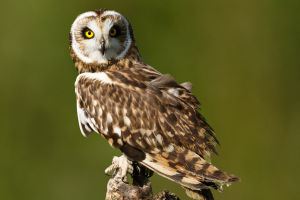The mountain bluebird (Sialia currucoides) is one of North America's most enchanting birds, known for its striking plumage and vibrant presence in high-altitude habitats.
This small thrush, with its dazzling blue feathers, is not only a visual delight but also an important part of its ecosystem.
Let's explore the fascinating world of the mountain bluebird, from its appearance and habitat to its behavior and conservation status.
A Glimpse of Beauty
The male mountain bluebird is renowned for its brilliant blue plumage, which is particularly vivid during the breeding season. This vibrant color is a result of the bird's unique feather structure, which scatters light to create an iridescent effect. In contrast, the female is more subdued in color, with a mix of gray and blue that provides her with excellent camouflage during nesting. However, both share a similar white belly and a distinctive, cheerful song.
Habitat and Range
Mountain bluebirds are native to the western regions of North America, ranging from Alaska and Canada down to the northern United States. They favor open, high-altitude environments such as alpine meadows, grasslands, and sagebrush areas. Their preference for these habitats is linked to their feeding habits; they thrive in areas with abundant insects, which are their primary food source.
During the breeding season, which typically spans from late April to August, mountain bluebirds migrate to higher elevations. They build their nests in tree cavities, old woodpecker holes, or even in man-made structures like fence posts. The nests are lined with grass and feathers, creating a cozy environment for their eggs and chicks.
Behavior and Diet
Mountain bluebirds are known for their agile flight and impressive aerial acrobatics. They use these skills to catch insects mid-air, a technique that makes them excellent insectivores. Their diet primarily consists of beetles, grasshoppers, and other flying insects. In the winter months, when insects are scarce, they may also consume berries and seeds.
Their foraging behavior is quite fascinating. Mountain bluebirds are often seen perched on a high vantage point, such as a fence post or a tree branch, scanning the ground for potential prey. Once they spot an insect, they swoop down with remarkable speed and precision to catch it. This hunting method not only highlights their agility but also their keen observational skills.
Breeding and Nesting
The breeding season is a critical time for mountain bluebirds, as they need to find suitable nesting sites and ensure the survival of their offspring. The male performs a variety of courtship displays to attract a mate, including puffing out his chest, singing, and performing aerial flights. Once a pair has formed, they work together to build the nest, with the female taking the lead in constructing it.
Mountain bluebirds typically lay between 4 to 6 eggs per clutch. The female incubates the eggs for about two weeks, during which time the male brings her food. After the eggs hatch, both parents are involved in feeding the chicks, which fledge (leave the nest) around 18 to 22 days later. The fledglings are cared for by their parents for a short period before they start foraging on their own.
Conservation Status
The mountain bluebird is currently classified as a species of "Least Concern" by the International Union for Conservation of Nature (IUCN). However, like many bird species, it faces threats from habitat loss and climate change. The conversion of open grasslands into agricultural or urban areas can reduce the availability of suitable nesting sites and food resources. Additionally, changing climate patterns can affect their migratory behavior and food availability.
Conservation efforts to protect mountain bluebirds focus on preserving their natural habitats and monitoring population trends. Birdwatching organizations and local conservation groups play a crucial role in these efforts by raising awareness and advocating for habitat protection.
The mountain bluebird is a captivating species that embodies the beauty and diversity of North America's avian life. With its striking blue feathers, agile hunting techniques, and fascinating breeding behaviors, it offers a glimpse into the intricate world of high-altitude birds. By continuing to support conservation efforts and preserving their habitats, we can ensure that future generations will also have the opportunity to marvel at the splendor of the mountain bluebird.


